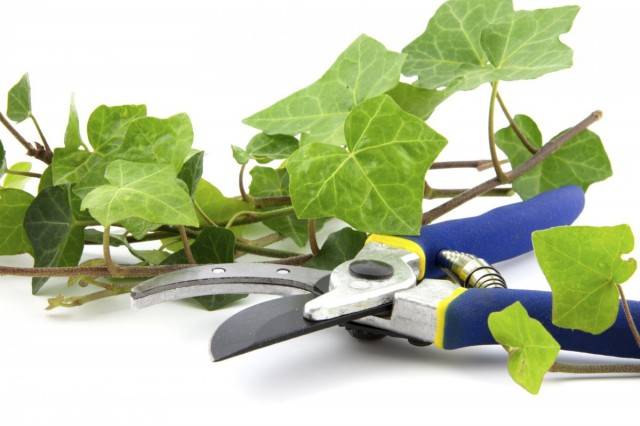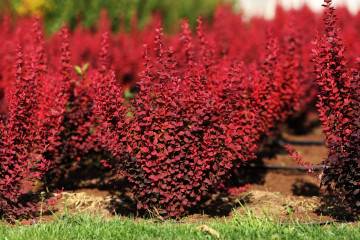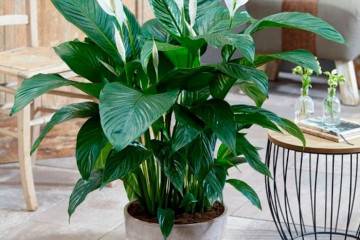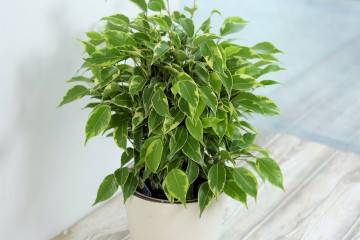Description of Wild Common Ivy - Hedera Helix
Content:
Plants are able to decorate a room not only inside, but also outside. Common ivy will beat any interior. It does not require special conditions, its unpretentiousness and frost resistance surprise the owners. In order for an evergreen vine to please the eye, you need to know the rules of reproduction, transplantation and watering.
Common ivy (Hedera Helix): description and characteristics
An evergreen creeping or climbing liana is characterized by branching shoots and aerial roots. The description of the plant says that ivy has berries - black spherical peas. The fruits are poisonous to humans and can be harmful.
What is curly ivy
This is the most common type of ivy plant, which also has another name in Latin - Hedera Helix. Features of a climbing vine:
- the length can reach 30 m, so ivy is often used for landscaping vertical surfaces;
- has dark green shiny leaves with white blotches, and the roots in the form of suckers allow the shrub to cling to the support;
- this species is resistant to cold weather, it loves partial shade and places without wind;
- popular varieties of climbing ivy - Sagittaefolia, Mona Lisa, Eva, Professor Seneta.
Common ivy: where it grows
The plant as a herb can be found in oak and beech forests, as well as in the foothills and lowlands. The climbing liana is widespread in nature in the south and west of Asia, in southern, central and western Europe. Ivy grows in the Krasnodar and Kaliningrad regions of Russia. It is often used to decorate houses and other structures in the Crimea.
How to care for common ivy at home
The plant is unpretentious, therefore, does not require special care. Leaves must be regularly wiped from dust. Basic rules for caring for ivy on trees and other surfaces:
- location. Shade-tolerant liana is able to grow without the sun, but variegated forms need partial shade;
- watering. The shallow root system requires constant moisture, especially in spring and summer. Stagnant water and dry soil will lead to death. In winter, frequent watering is possible only when the plant is in a warm room;
- temperature. In the summer season, ivy can grow on the fence, in the garden, on the balcony. It perfectly tolerates temperature fluctuations, drafts. The optimal mode in winter is 6-12 ° С, and in summer - 18 ° С;
- air humidity. At temperatures above 20 ° C, it is necessary to regularly spray the plant, there should be high humidity in the room;
- top dressing. In the spring and summer, the vine is fertilized three times a month. In winter, the amount of dressing is reduced to 1 time per month. Yellow and fallen leaves indicate an excess of useful components;
- priming. The plant can grow in any soil, but the best option would be a loose universal weakly acidic substrate or a mixture of leafy and soddy soil with the addition of sand and peat;
- transfer. Young ivy should be replanted every spring, and adult ivy every 2-3 years.When placing a plant in a pot, it is worth considering its superficial root system, so the container should be shallow and wide.
It is also recommended to periodically prune during the period of intensive growth, removing drooping leaves and shoots.
How does it multiply
To increase the flower population, you can resort to one of the breeding methods.
Ivy propagation by layering
This is the easiest way to get new plants. A couple of shallow holes should be made near the bush, into which the lower shoots should be placed and buried. The soil must be moistened, additionally add a solution of ammonium nitrate. Reproduction is carried out in early summer or late spring, so that wild ivy has time to form a root system.
Propagation by apical cuttings
From indoor ivy, it is necessary to cut off the ends of the shoots approximately 10 cm long, and then plant them in a mixture of deciduous soil and sand. You will need to cover the top with a glass jar or a plastic bag at an optimal temperature of 15-20 ° C. The soil should be moist, but not wet. Rapid rooting is observed in cuttings with aerial roots before planting.
Medicinal properties of common ivy
Plant-based preparations have antifungal, antibacterial, expectorant, diuretic, antitussive, wound healing and antispasmodic properties. Medicines are prescribed for diseases of the biliary tract, liver, duodenitis, gastritis, colitis, chronic and acute enteritis. The benefits of ivy are observed in pneumonia and bronchitis.
Natural medicine is used externally for leucorrhoea and for douching for inflammatory processes of the reproductive system. For asthenia, craniocerebral trauma and in the postoperative period, it is used as a tonic. Leaves are great for hangovers. Due to its antibacterial and wound-healing effect, ivy shows good results in the treatment of streptoderma, boils, corns, burns, scabies, head lice, mycosis.
Climbing ivy is a useful and beautiful plant. With the right approach to breeding and caring for a vine, it will delight with green leaves and resilient stems for many years. Do not forget about the risk of infection with parasites, therefore, the shoots and the root system must be regularly examined for the presence of insects. Seeds for planting can be purchased at a specialist store. Ivy is able to twine around poplar, aspen, birch and other trees.



















